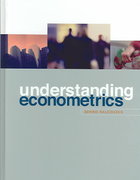Question
A firm has total cost of C(Q) = 500+ 20Q when producing quantity Q. There are six high-income consumers, each with inverse demand P(Q) =
A firm has total cost of C(Q) = 500+ 20Q when producing quantity Q. There are six high-income consumers, each with inverse demand P(Q) = 100 5Q and four low-income consumers, each with inverse demand P(Q) = 100 80Q.
(a) What is the socially efficient price to charge each consumer? How much must the firm be subsidized (assume the firm cannot use a two-part tariff)?
(b) Now assume the regulated monopolist is considering using a two-part tariff. What is the largest fixed fee (Fpoor) that a low-income consumer would pay for the right to purchase the product at a per-unit price equal to marginal cost? What is the corresponding largest fixed fee (Frich) that a high-income consumer would pay?
(c) Suppose the two-part tariff is implemented. The per-unit price is set equal to the firm's marginal cost, and the fixed fee is set equal to Fpoor. How much profit would the firm earn if it operated under this tariff?
(d) Now suppose that price discrimination is legal, consumers cannot resell the product after purchasing it, and the monopolist can distinguish between high- and low-income consumers. Further suppose that the monopolist sets a per-unit price equal to its marginal cost for all consumers. In addition, the monopolist charges each consumer a fixed fee equal to one-fourth of the maximum amount he or she is willing to pay for the right to purchase at marginal cost. How much profit will the monopolist earn under these discriminatory two-part tariffs? How much deadweight loss will arise?
Step by Step Solution
There are 3 Steps involved in it
Step: 1

Get Instant Access to Expert-Tailored Solutions
See step-by-step solutions with expert insights and AI powered tools for academic success
Step: 2

Step: 3

Ace Your Homework with AI
Get the answers you need in no time with our AI-driven, step-by-step assistance
Get Started


